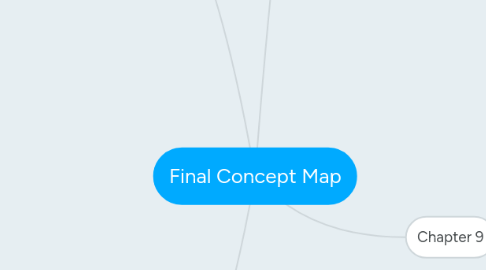
1. Chapter 10
1.1. force-field analysis model
1.1.1. unfreezing
1.1.2. moving/changing
1.1.3. refreezing
1.2. types of strategies
1.2.1. collaboration
1.2.1.1. implementation
1.2.1.2. capacity building
1.2.1.3. benefit: allows energies to be focused onto the change itself
1.2.1.4. challenges: recognizing cultural clashes, poor communication
1.2.2. campaign
1.2.2.1. education
1.2.2.2. persuasion
1.2.2.2.1. cooptation
1.2.2.2.2. lobbying
1.2.2.3. benefit: motivation comes from issues cited as important by constituents
1.2.2.4. challenge: requires a strong understanding of the target goal and tactics likely to be successful
1.2.3. contest
1.3. covert tactics
1.3.1. when an individual keeps tactics secret and engages in acts without sharing their actions with others
1.3.2. ethical?
1.3.2.1. covert tactics may be ethical if the individual is attempting to uncover unethical practice
1.3.2.1.1. textbook example of child welfare worked engaging in covert tactics in order to uncover the lack of abuse and neglects cases being properly investigated
2. Chapter 11
2.1. goal
2.1.1. focal point of change process, the desired result
2.2. objective
2.2.1. elaboration of goals which outline details of the intervention
2.3. activities
2.3.1. tasks that need to be completed in order to accomplish the objectives
2.4. steps to completing an objective
2.4.1. time frame
2.4.2. target
2.4.3. resulting
2.4.4. criterion for measuring result
2.5. Gantt chart
2.5.1. constructed of columns and rows
2.5.1.1. columns identify activity number, responsible person, and beginning and ending dates
2.5.1.2. rows represent the various activities
2.5.1.3. when constructing, list activities first, then establish time frames
2.6. monitoring
2.6.1. tracking progress and warning managers of what is happening
2.6.2. involves collecting data and information about implementation
2.7. evaluating
2.7.1. determining the value of something through careful study
2.7.2. involves studying data to determine whether or not the project is working
2.8. steps to successful report writing
2.8.1. establish a standard
2.8.2. avoid too much information
2.8.3. pay attention to aesthetics
2.8.4. explain tables and graphs in simple English
2.8.5. make aggregation meaningful
3. Chapter 8
3.1. key components of organizational task environment
3.1.1. consumers
3.1.2. suppliers
3.1.3. competitors
3.1.4. regulators
3.2. resource dependence
3.2.1. an organization's reliance on elements within the environment from which it obtains the resources needed for survival
3.2.2. related to systems theory
3.2.3. can lead organizations to establish relationships with one another
3.3. eligibility criteria
3.3.1. organizations often focus on a particular client population
3.3.1.1. create a "criteria" that individuals need to meet in order to be considered for services from the organization
3.3.1.2. may lead an organization to decline an individual's request for services, in which case they should help the individual find an agency that meets his or her needs
3.4. managerial theories/models
3.4.1. linking-pin structure
3.4.1.1. emphasis on work units
3.4.1.2. linking one unit to another
3.4.2. matrix structure
3.4.2.1. supervision assigned to function, not person
3.4.2.2. staff likely to have multiple supervisors
3.4.3. project team structure
3.4.3.1. teams work on project and assume different responsibilities, working independently
3.4.4. collegial structure
3.4.4.1. individuals work independently and come together only when jobs overlap
3.5. line-item budgeting
3.5.1. estimating budget needed to cover expenses for each individual category
3.6. functional budgeting
3.6.1. focusing on specific program expenditures rather than looking at all agency expenditures
4. Chapter 9
4.1. framework for developing an intervention strategy
4.1.1. develop intervention hypothesis
4.1.2. define participants
4.1.2.1. important to identify in systematic manner so that participants from all systems are represented
4.1.3. examine capacity for change
4.1.4. select change approach
4.2. questions to ask when defining target systems
4.2.1. what needs to be changed for the effort to be successful?
4.2.2. where is the target system located?
4.2.3. are there multiple targets that need to be pursued? if yes, what are they?
4.3. systems that promote change
4.3.1. initiator system
4.3.2. change agent system
4.3.3. support system
4.3.4. controlling system
4.4. systems that are the focus of change
4.4.1. client system
4.4.2. host & implementing system
4.4.3. target system
4.4.4. action system
4.5. approaches to change
4.5.1. policy
4.5.1.1. pursued in agencies or at governmental level
4.5.2. program
4.5.2.1. pursued in micro practice
4.5.3. project
4.5.3.1. pursued in smaller arenas
4.5.4. personnel
4.5.4.1. pursued in organizations and at a community level
4.5.5. practice
4.5.5.1. pursued mainly in organizations
